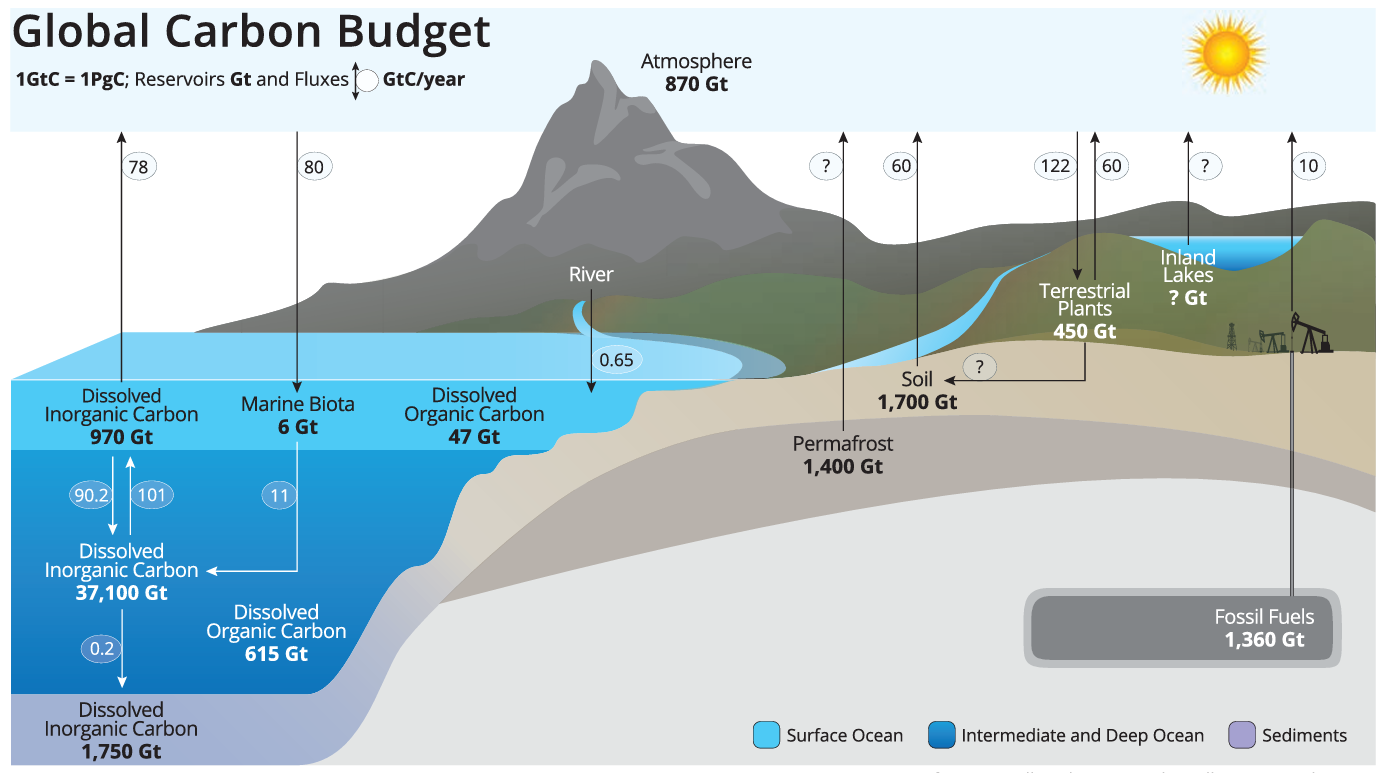What is Marine Carbon Dioxide Removal?
Reducing atmospheric carbon dioxide emissions from transportation, electricity generation, industrial processes, and agriculture is necessary to limit global temperature rise. But even with significant emissions reductions, most models predict that removal of legacy carbon dioxide emissions from the atmosphere will be necessary to avoid the worst impacts of climate change. This cleanup effort, often known as carbon dioxide removal (CDR), differs from carbon offsets or carbon capture because it targets a net-negative approach.
To limit global warming by the year 2100 to 1.5ºC, the 2018 Intergovernmental Panel on Climate Change estimated that as much as 15 gigatons of CDR per year may be necessary from 2020–2100—that’s roughly equivalent to removing the legacy emissions from over 3.3 billion gasoline-powered cars annually for 80 years. Given the scale of this challenge, we may need a portfolio of CDR solutions across both land and sea.
Leveraging Oceans for Carbon Storage

Oceans account for over 70 percent of the Earth’s surface and already act as the world’s largest carbon storage sink, absorbing over 25 percent of anthropogenic carbon dioxide emissions. The mCDR solutions leverage the natural role of the ocean in storing carbon and avoid land-, energy-, and water-use challenges associated with some other CDR approaches. Plus, mCDR technologies may also provide other valuable benefits when scaled, such as mitigating ocean acidification risks, providing habitats for marine organisms, and producing emissions-free fuels like hydrogen.
Many mCDR solutions have been proposed, but few have been tested in the field and none have been tested at scale. Organized, multidisciplinary, large-scale research and development efforts—like the testbed and research at PNNL—are necessary to enable safe, sustainable, and economical development of mCDR science, technologies, and solutions to mitigate the effects of climate change.